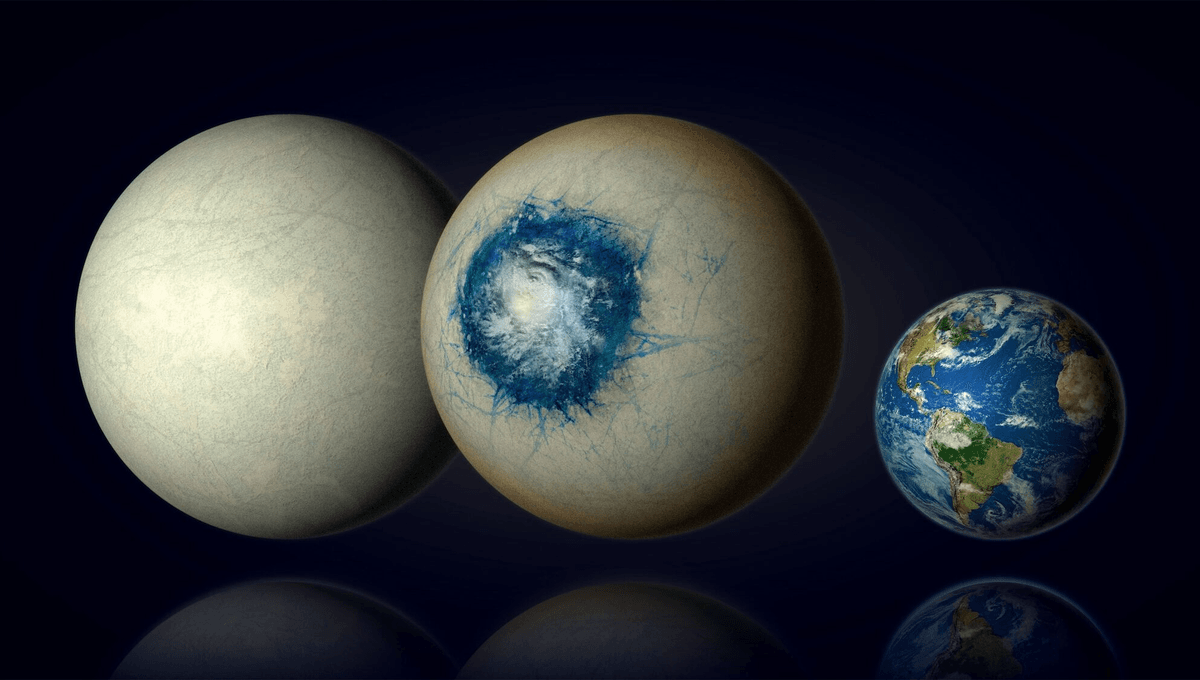
Observations by the JWST have revealed exciting hints of an Earth-like atmosphere on a planet orbiting a relatively nearby star. The planet is likely to be cooler than Earth, but still warmer than Mars and possibly well-suited to life.
The planet LHS 1140b has been causing excitement ever since it was discovered in 2017, having been dubbed the “Best place to look for life beyond the Solar System”. However, there are a great many tests a planet needs to pass to have good prospects for hosting life we can detect. LHS 1140b got the title by initially meeting a few of the requirements. Further observations have now confirmed some suspected aspects and provided the first positive signs for others.
LHS 1140b is larger than Earth, with a radius about 70 percent greater than ours. That puts it near the point where it could be a super-Earth, composed of a mix of rock and ice and water, or a sub-Neptune, composed of gas at least until a depth where the pressure would crush you.
However, its density is not that far below Earth’s and observations made by the JWST last December show no sign of the hydrogen-rich atmosphere expected of a gas planet. The most likely explanation for the lower density is that 10-20 percent of its mass is water, with the rest being rock and metal like Earth. The water would probably be a mix of liquid and ice; although the ratio is unknown, that’s a good place to start when looking for life.
LHS 1140b is of such interest not only because of its intrinsic features but because it transits across its star from our perspective, allowing us to get a spectrum of an atmosphere as it blocks the starlight, if just an atmosphere exists. The JWST watched this happen twice last year.
Although seekers of life want a planet that is not all gas, they do want one with some, enough to keep an ocean liquid and give something for lifeforms to breathe. The latest results suggest LHS 1140b hits that sweet spot.
“LHS 1140b is one of the best small exoplanets in the habitable zone capable of supporting a thick atmosphere, and we might just have found evidence of air on this world,” said Professor Ryan MacDonald of the University of Montreal in a statement. The spectrum collected most closely matches a predominantly nitrogen-based atmosphere, like Earth’s, but as the uncertainty in MacDonald’s statement indicates, other explanations remain possible. The JWST will need to observe LHS 1140b passing between us and its star on more occasions for confirmation.
“This is the first time we have ever seen a hint of an atmosphere on a habitable zone rocky or ice-rich exoplanet. Detecting atmospheres on small, rocky worlds is a major goal for JWST, but these signals are much harder to see than for giant planet atmospheres,” MacDonald said.
Although LHS 1140b is thought to resemble Earth, at least approximately, in composition and temperature, it is very different in one way. It’s almost certainly tidally locked, with one side always facing the red dwarf star LHS 1140, and the other pointing outwards towards endless night. Were its star brighter, this might make one side of the planet too hot to inhabit and the other permanently frozen, leaving a narrow ring where liquid water could survive.
However, unless the atmosphere is also rich in powerful greenhouse gasses, it’s more likely most of LHS 1140b is icy, with a liquid ocean directly facing the star, making it look like a creepy eyeball. The ocean is estimated to be about half the size of the Atlantic, and its center, where the star is directly overhead, might be around 20°C (68°F).
“This is our first tantalizing glimpse of an atmosphere on a super-Earth in the habitable zone. Compared to other known habitable zone exoplanets, such as those in the TRAPPIST-1 system, the star LHS 1140 appears to be calmer and less active, making it significantly less challenging to disentangle LHS 1140 b’s atmosphere from stellar signals caused by starspots,” Macdonald said. “While we need more JWST observations to confirm the nitrogen-rich atmosphere, and to search for other gases, this is a very promising start.”
The other attractive feature of LHS 1140b from our perspective is its location 49 light-years away. TRAPPIST-1f and g, aside, this is the closest transiting planet at a temperature suited to liquid water.
Even if there is no water at LHS 1140b’s surface, recent research suggests it could be well placed to have an internal ocean like Europa, but many times bigger.
By chance, one of the JWST observations also caught LHS 1140c, a smaller but much hotter world, in the act of transiting.
Although LHS 1140b orbits 15 times in an Earth year, many of its transits can’t be observed; for example, because the Sun is in the way. If we want to collect enough data to settle questions about the composition of its atmosphere before the JWST runs out of fuel, observing the planet for longer is required.
The study has been accepted for publication in the Astrophysical Journal Letters, and a preprint is currently available on ArXiv.org.
Source Link: JWST Spots Signs Of Earth-Like Atmosphere Around The Best Planet To Look For Life